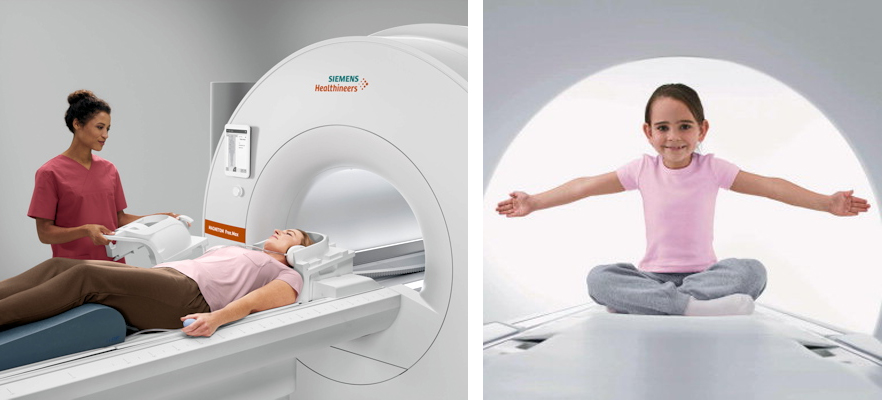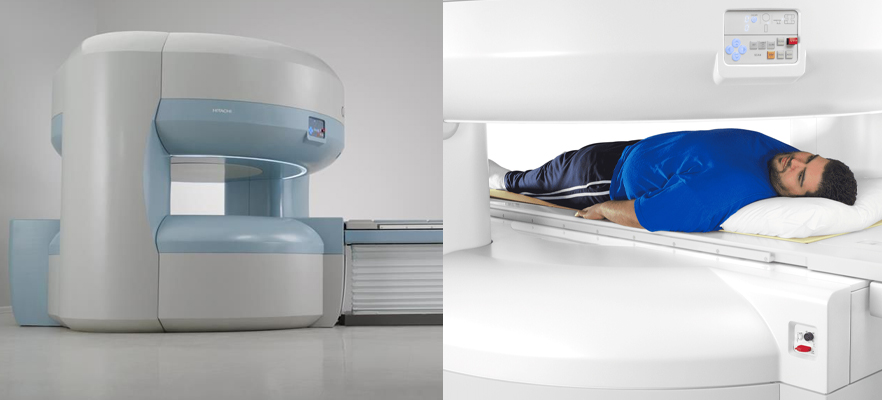There is a lot of confusion about the different types of MRI in use today. What does the term “open” really mean when it comes to MRI? Today, we are going to look at two MRI designs–Wide Bore MRI and Open MRI, and we will try to clear up any confusion about what you can expect if you are undergoing a procedure with one of these MRI types.
Wide Bore MRI
“Wide Bore” or “Open Bore” MRI is the primary type of MRI in use throughout ZP offices. The term “bore” refers to the doughnut-shaped opening that the patient moves into while lying on the table. The extra wide opening on these machines is 70 cm across, which provides a less claustrophobic experiences with more space in all directions. These units are also considered to have a “short bore” design, which is more like going into a doughnut rather than a tunnel, like in older MRI units.
ZP has the most experience in the country with MRI, utilizing the latest in 3 Tesla and 1.5 Tesla MRI technology. Our 3T MRI technology provides physicians with unprecedented detail, especially in neurological, musculoskeletal and soft tissue imaging.
(In technical terms, this type of MRI is considered a “closed” unit, because the patient is surrounded all around, even though there is a lot more space than in older, outdated units.)

Open Sided MRI
For an “Open Sided” type of design, imagine an MRI sandwich. The MRI is like the bread, and you are the main part of the sandwich that moves in between the bread. Although there is more open space on both sides of the patient, this can create a claustrophobic experience because there is very little room above the patient. Also, most open sided MRI units have weaker magnets, which leads to less detail in the images produced.

